Stephanie Smith of America’s Credit Union Museum Shares Importance of Preserving Credit Unions’ Stories
Credit unions have thousands of amazing stories to tell from their century-plus in business. Unfortunately, many of those stories are cast aside due to mergers and other factors. This is what makes the work of America’s Credit Union Museum so important: to ensure that those stories don’t become completely lost to time.
The Credit Union Connection Founder Sarah Snell Cooke got the chance to sit down with America’s Credit Union Museum Executive Director Stephanie Smith to discuss the importance of preserving our stories and history, museum displays including Herstory, and how credit unions can contribute to the museum’s physical and digital collection.
Watch the video!
Or, read the full transcript:
Disclosure: Transcript is automatically generated
Sarah Cooke 00:08
Hello, and welcome, everyone to today's Credit Union Connection. I am Sarah Snell Cooke. I'll be your host, as usual. I'm here today with Stephanie Smith of the America's Credit Union Museum. Welcome, Stephanie.
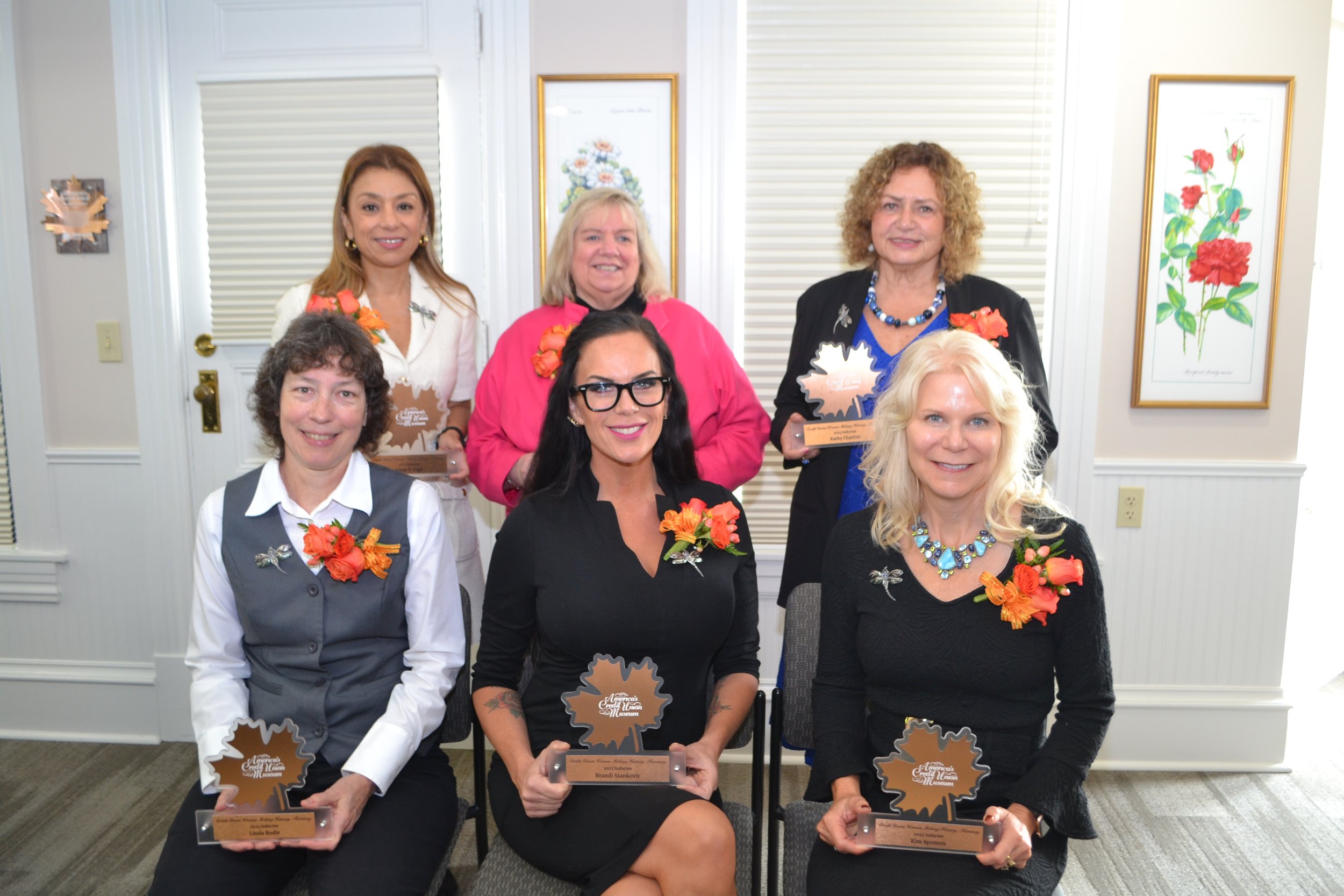

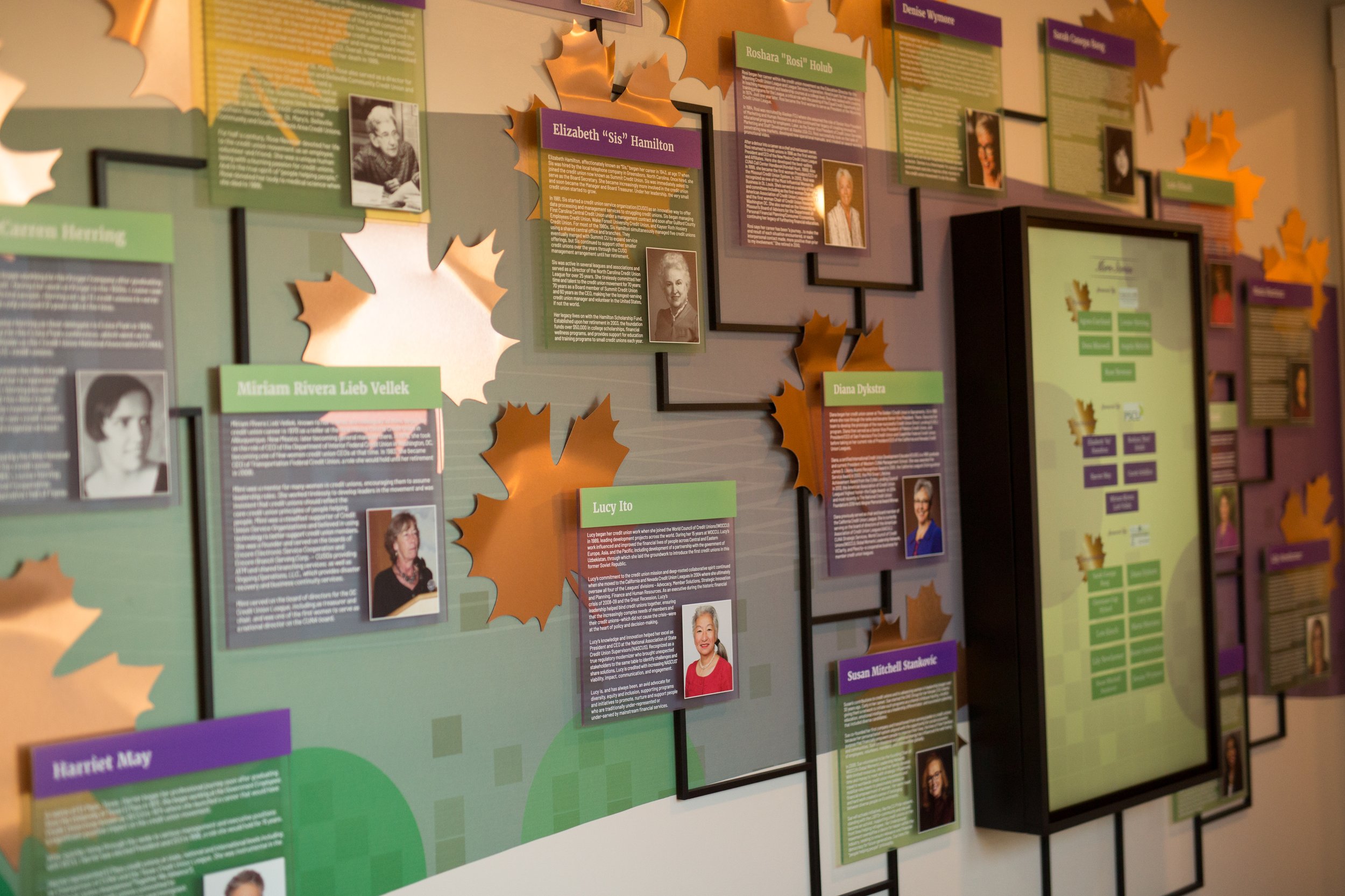
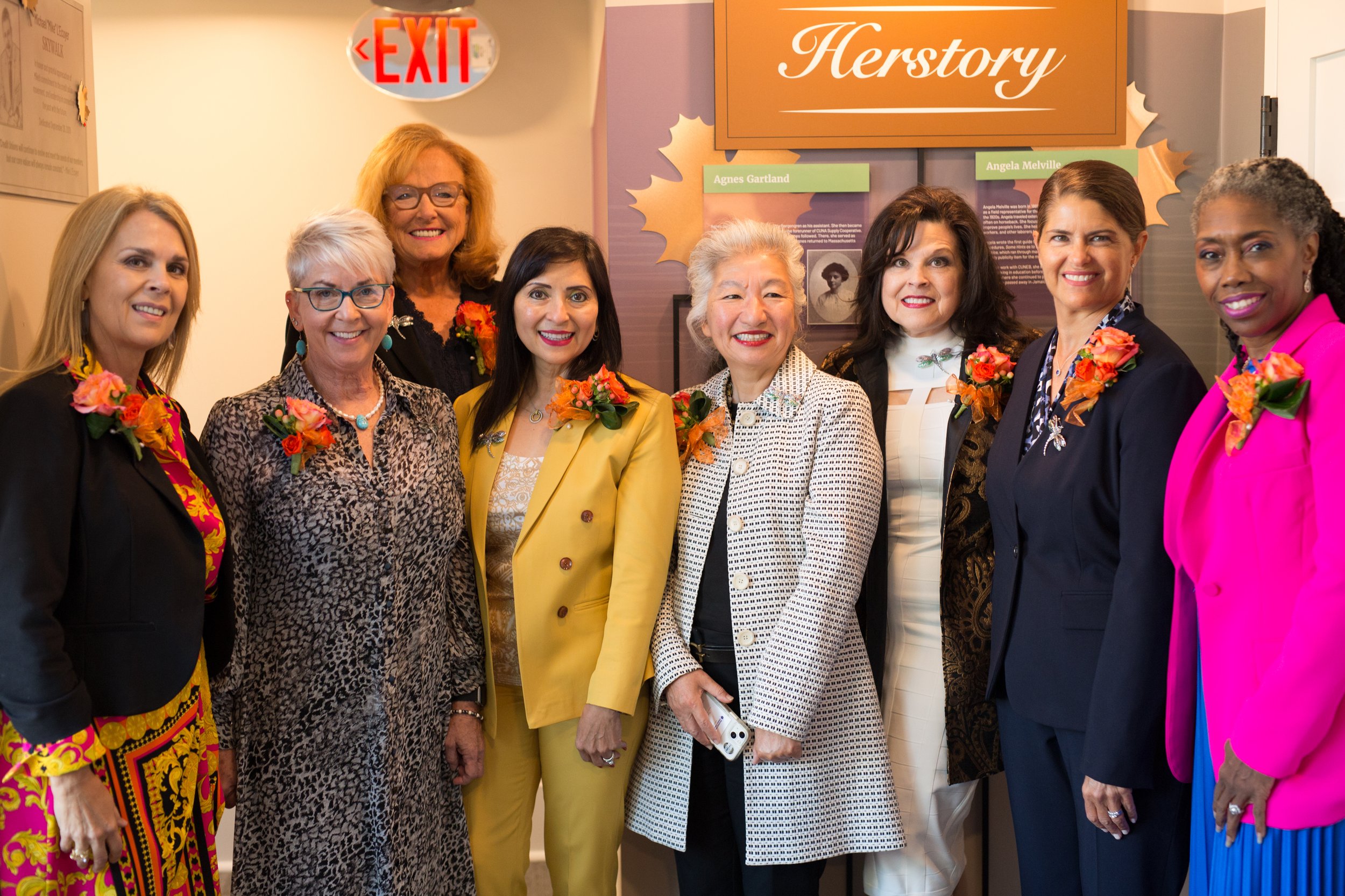
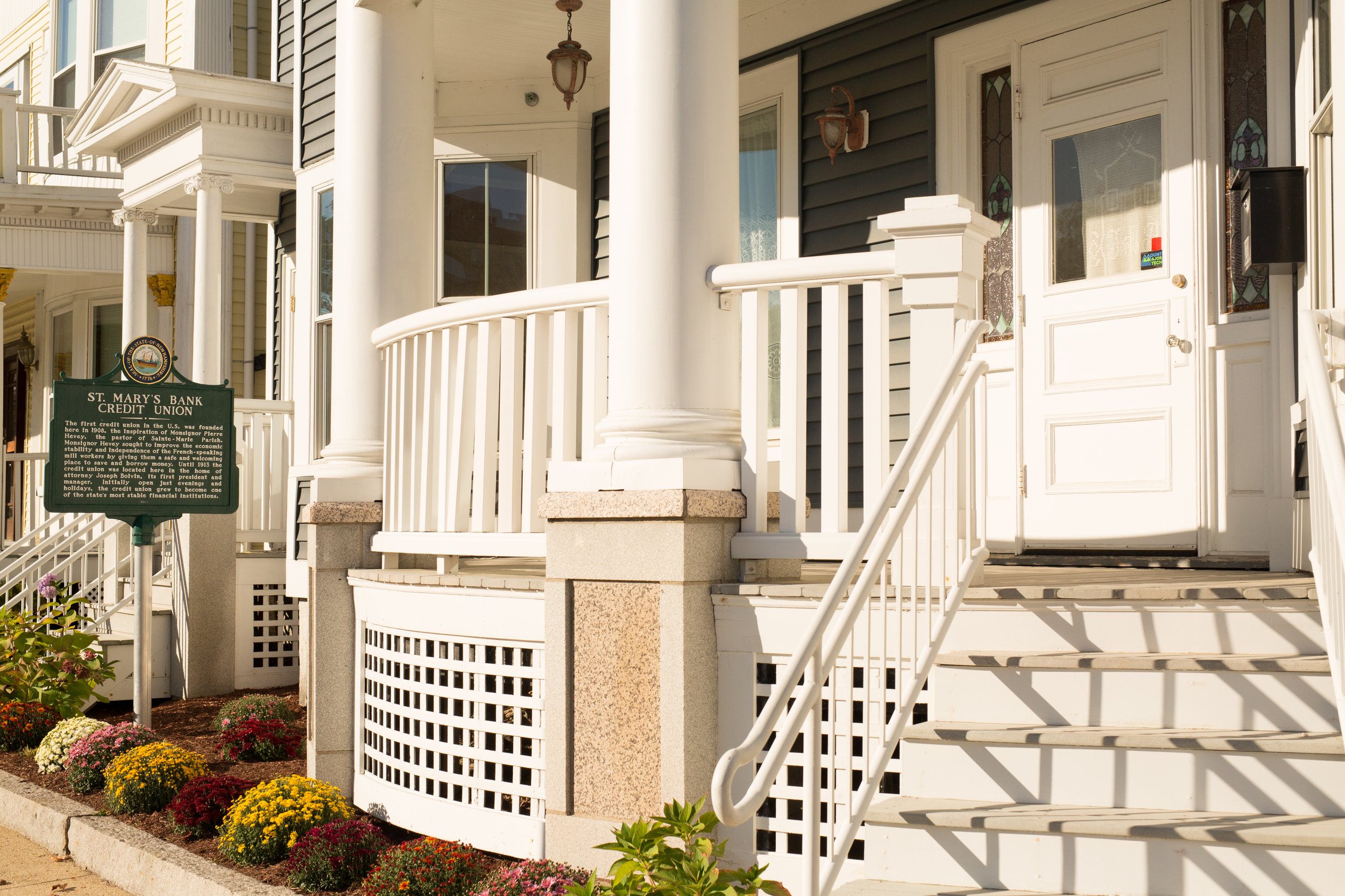
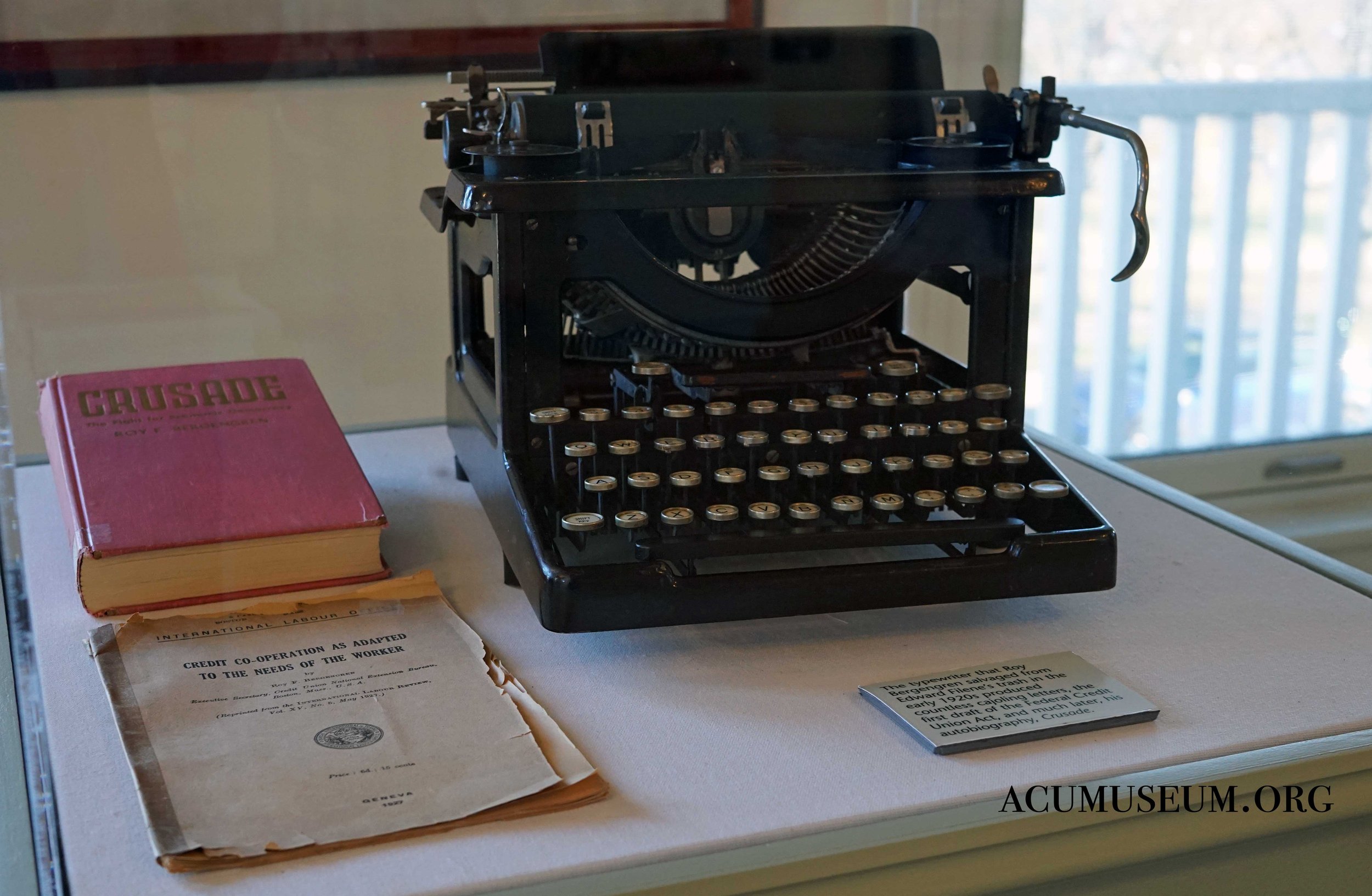
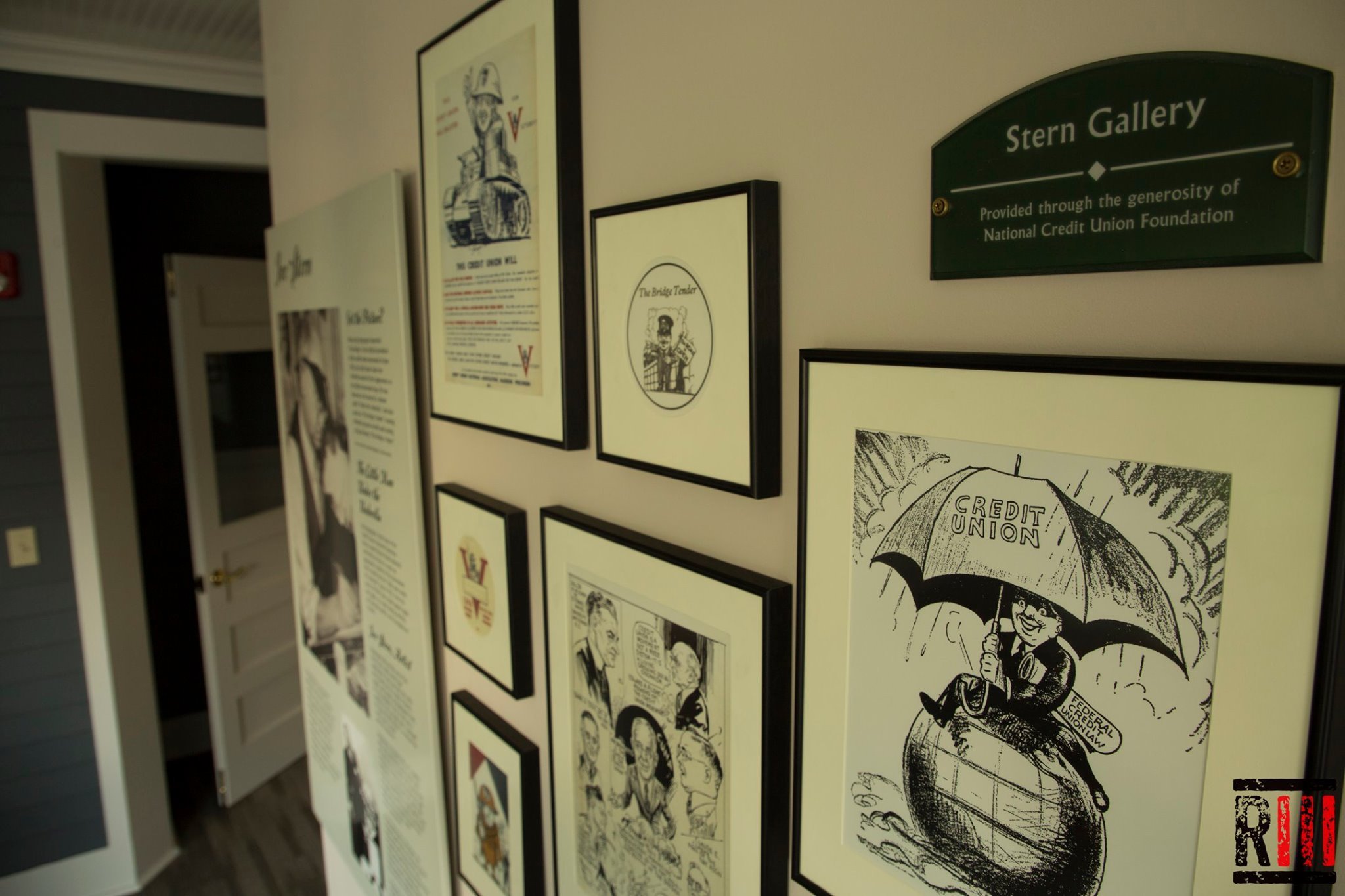
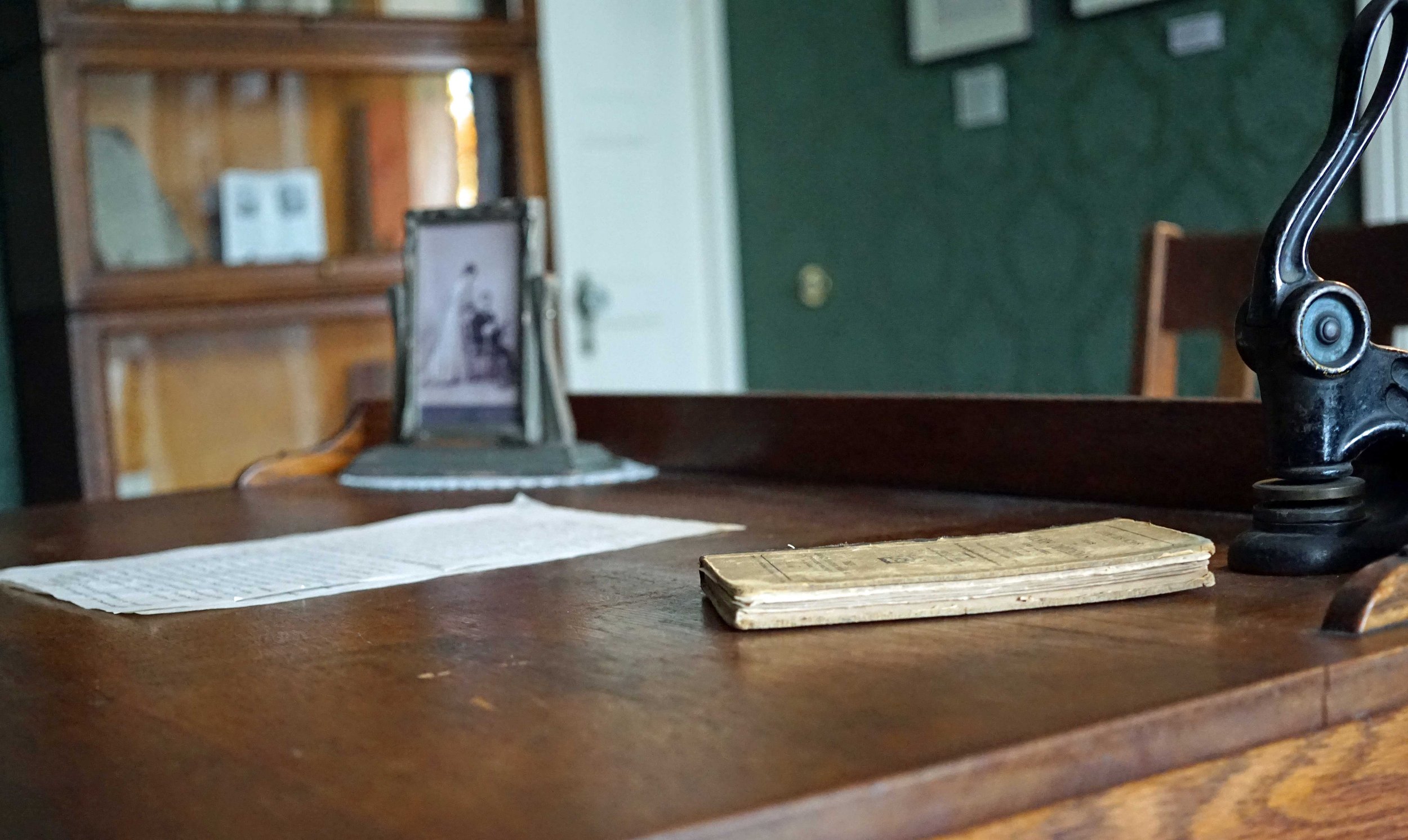
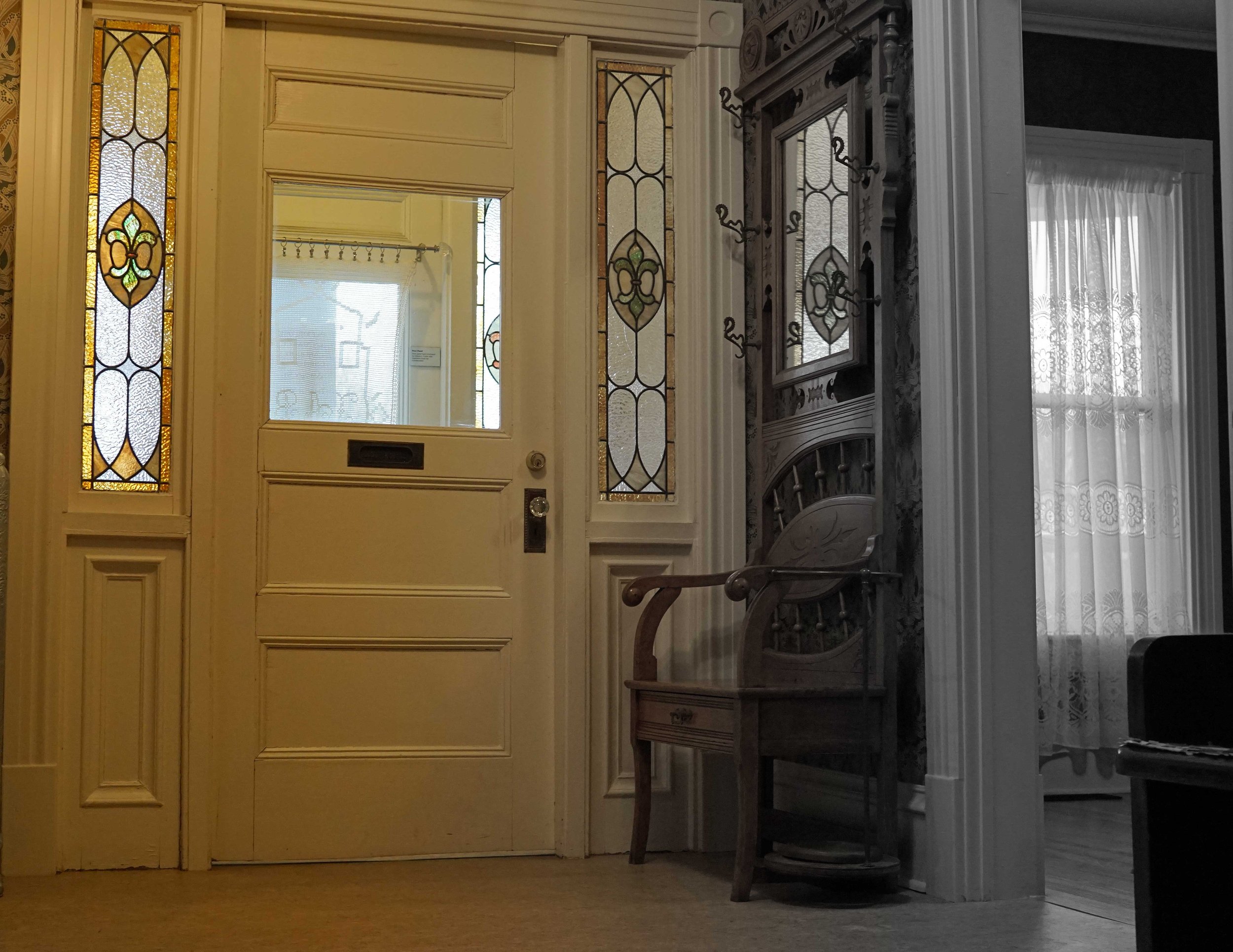
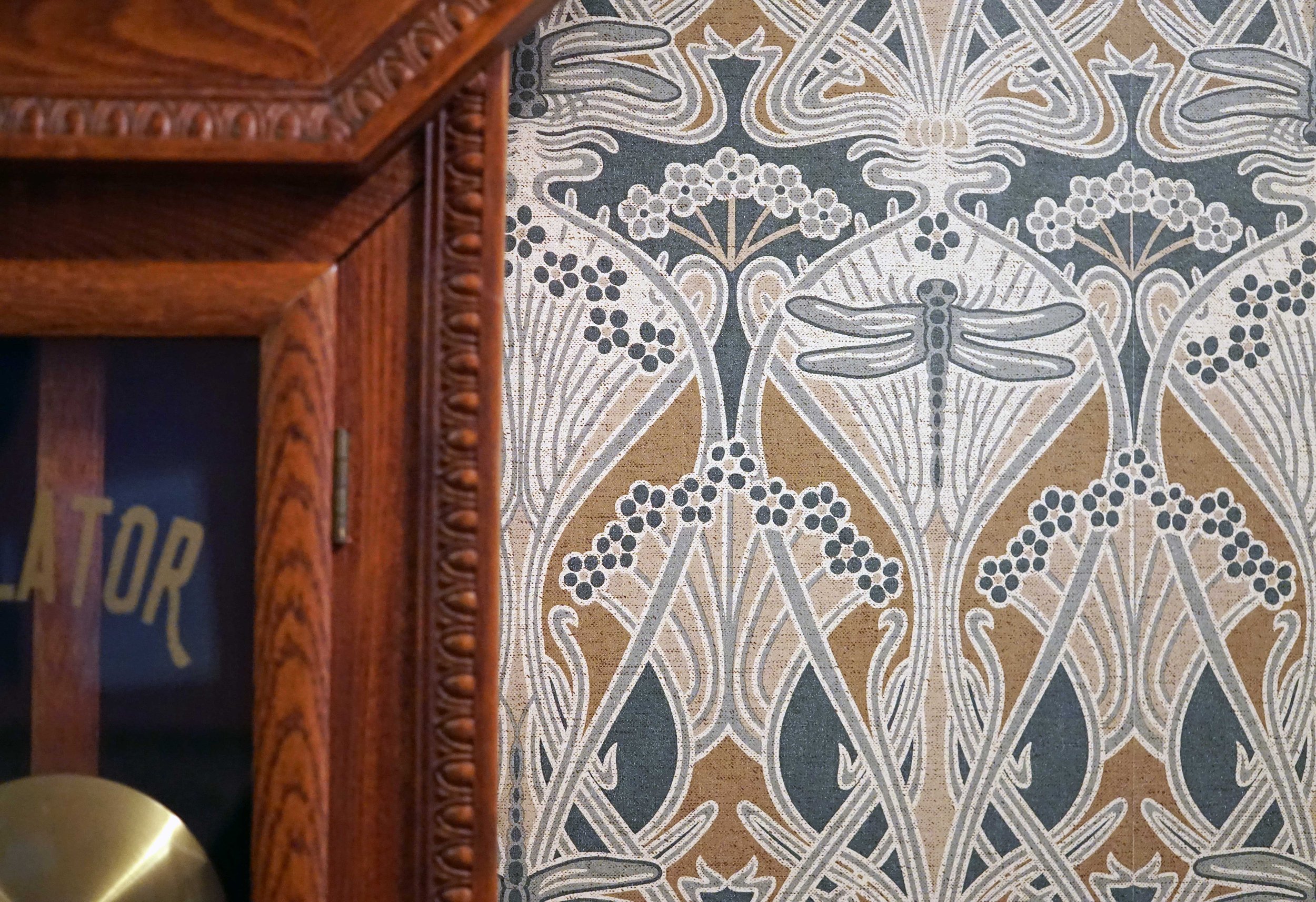
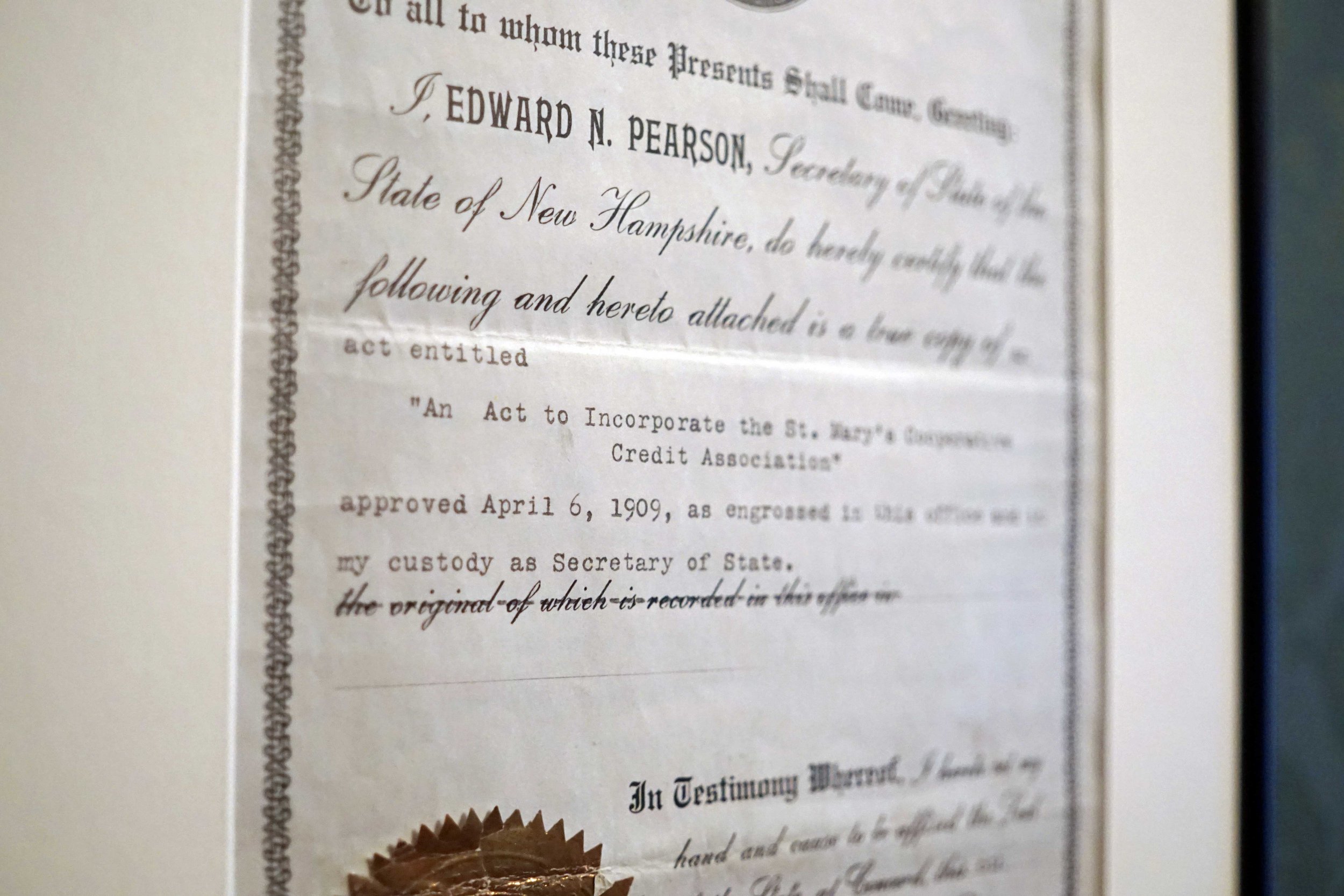
Stephanie Smith 00:48
Good morning, Sarah. Thanks for having me. Yes. Great.
Sarah Cooke 00:51
Good morning to you. Now. So tell us a little bit about yourself and the museum to kick things off?
Stephanie Smith 00:57
Sure. So I am the Executive Director of America's Credit Union Museum. I've been there for about 10 years. The museum has been in existence for just over 20 years. So we are located in Manchester, New Hampshire, on the site of the very first credit union in the country in which was St. Mary's Bank. So where the original place where those first transactions took place. And in addition to preserving that space, we also have a full museum that chronicles the history from, from 1908 forward to today. Well,
Sarah Cooke 01:30
awesome, that is awesome, that we're preserving the legacy. I'm always about looking forward. But obviously, you need to know where you came from. Keep keeps a little, roots. Yes. So um, tell us about how it got started. And maybe some of the collections that you all have there. So I know you started Herstory this year, or last year, I guess. And some other actually, we're
Stephanie Smith 01:51
now approaching our third induction of Herstory, which is pretty amazing. But not to get ahead of myself. The museum was started when the president of St. Mary's Bank realized that the space where their credit union started was just up the hill from where they were building their new branch. So it's actually a really cool story, as it's been told to me, a gentleman by the name of Ron Rio, who was the president at the time, walked up the hill and knocked on the door and said, Hey, this building, you know, is sort of the birthplace of St. Mary's Bank, we would love to own this building, if you would sell it to us. And the gentleman that owned it at the time was a gentleman by the name of Armand Lemire. And he was not interested in selling. But as the story goes, time passed, and I don't think it was a significant amount of time. But time passed, and he apparently walked down the hill to Ron Rio's office and said, I won't sell you the building, but I will give it to you, which is an amazing gift. And then when the transit action took place to transfer ownership of the space, this elderly woman and her daughter were, approached Ron and asked if they could sit in on the closing. And after the closing went through, she approached Ron again, and said that it was her father, that was the first credit union manager in that space, and that she grew up in that home. So we had this amazing opportunity to to collect her recollection of what the space was like, in the early 1900s, when the credit union was in in the backroom of her house.
Sarah Cooke 03:23
That is awesome, because that is how many credit unions started for sure, absolutely.
Stephanie Smith 03:28
And it's amazing to me that when people come to the museum, they'll often talk about how they had family members who started credit unions in their dining room. And that's not an uncommon thing at all. And it's wonderful to to preserve the space where that first one happened, as well as to hear the stories of people that that did that themselves.
Sarah Cooke 03:49
Yeah, absolutely. So how do you decide on like, what the exhibitions are going to be, and how you're going to present those? So
Stephanie Smith 04:02
like I said, we've preserved the first florr space of the museum to what it was like in 1908. So that's really what we consider a sacred space to the museum. And that space is very traditional to what the time period, you know, dictated, but the second floor of the museum is sort of our exhibition space. And going on four years ago, now we did a complete redo of that space and put a decade space of, you know, timelines of what happened in the credit union movement from 1909 to forward to today. So we we chronicled the biggies, you know, the the HR 1151, and your shared branching that came out of, you know, crises that happened in the United States. So we try and capture the big part of the history that sort of everybody knows, but then to personalize it with some stories. And that's really what brought us forward to, to Herstory, which you mentioned earlier, is I'd always do this tour, and we talk about the credit union history and Ed Filene and Whitebridge and Grande. And occasionally we would talk about, you know, Agnes Scotland or Louise Herring, and we'd give it the end of the tour. And people would say, this is great, but where are the women, and we realize that so many women were so active in the movement in the very early days, as well as today. So it became our mission several years ago to to create Herstory. And we thought it was going to be an exhibit that, you know, told the story of how women were involved from the very beginning, and tell the stories of maybe three women from the early years, and then three women that sort of what we call the change makers, or the transition to modern day, and some of the really, icons of today's credit union movement. So we thought it was going to be nine women, and one and done. And the first year, we would put out a call for nominations for that, because we also realized we didn't know the stories ourselves. So the first year, we were overwhelmed by nominations. And we ended up inducting 20 women, and we realized we needed to keep it going. So last year, we inducted another six. And Nominations are open right now for for the next class. And we as long as we have wall space, we're going to continue to tell those stories. And when we run out of wall space, we'll figure out how to deliver those stories digitally. So Herstory has really taken
off and brought a real national awareness to people about the museum, for those that maybe didn't know about us. So our call to action to get people to share the stories with us is really, it's been twofold for us as a benefit. We brought this amazing award winning exhibit to the museum space. But we also brought the awareness of the museum itself to a lot of people that otherwise didn't know we existed.
Sarah Cooke 06:56
Yeah, awesome. So you mentioned that Nominations are open right now, how do people make nominations?
Stephanie Smith 07:05
So go to our website, which is acumuseum.org. And right there on the homepage, there's a button that says 'Nominate a woman for Herstory 2024.' Nominations are open now, they will close Memorial Day weekend, the end of May. And the new induction class will be announced somewhere around July 1, with the induction ceremony at the end of September.
Sarah Cooke 07:26
Awesome, excellent. So the other thing you mentioned briefly, is digital. Because obviously, you know, you were saying four years ago, four years ago, we're in the middle of a pandemic. Sure. Museums, you know, just generally, seeing museums have more interactive experiences inside as well as online, has been occurring for quite a while now. Of course, COVID certainly sped that up. Talk about how the museum has adapted digitally?
Stephanie Smith 08:00
Yeah, for sure. You know, I think that COVID certainly made us go a little bit faster in that department. But we are a space with limited amount of flat surfaces to to put stories. And we're in the middle of New England. And let's face it, it's not a destination for everybody. It should be you know, I say come in September. But we realized that we had to deliver the museum to the masses in another format. So we sort of took the opportunity during COVID to really focus on that, you know, there weren't people in person at the museum, doing events or doing visits. So we started recording oral histories of, you know, some of the icons of the credit union movement in the past 50 years. And we we've added those to our website, we've added a digital component to Herstory. And I think that that's really the future of the museum's collections is to digitize what we have in physical archives, but also to tell the story so you can visit the museum from anywhere in the world.
Sarah Cooke 09:06
Yeah, and that's great for sharing credit unions' story and credit unions' collective story. Which is something I feel like we don't do nearly enough. A lot of people who run credit unions tend to feel, I don't know, some a lot of them don't even realize what they're doing is making history. Lifesaving stories, you know, so, you know, we were, we were brought together again about a story that you and Denise Wymore of the Credit Union De Novo Collective shared. Tell me, tell that, tell our audience that story again.
Stephanie Smith 09:44
Sure. Denise is such a great fan of the museum and I knew that she was doing this project about, during Women's History Month. So she reached out to me and asked me about some stories that she had heard from her time at the museum about women in the movement, and I follow that up with this sort of anecdote of what happened to me during the timeframe when she reached out to me. And that is, it happens probably a couple of times a year. And it is, a woman will call the museum. And I stopped and said to Denise, I told you this as well, it's always a woman, it's always a woman that calls me. And she calls and is usually quite emotional and quite distraught, because her credit union is merging with another organization. And there's no place for their history to go. So at some point, the museum has crossed that woman's path. And she has realized that maybe this is the place for that story to go. So we, you know, that sort of has created an opportunity for us to collect these stories of credit unions that are merging, and maybe their name is going away. But we have also created a digital exhibit of State Credit Union histories. So again, if you go to our website, you can see the history of credit unions in the United States broken down by state. And then it's a free, free for anybody to add to the museum their history of their organization. But there's only about 60 credit unions that have done that. So I am not sure what the what the struggle with that is. Because it's as simple as maybe uploading the history of the about us from your webpage. But when these things go away, and the only way to access them is the Wayback Machine, the story sort of died off. And I said to Denise, that I sort of feel like the museum sometimes becomes the the orphanage of wayward credit union stories. And sort of, we want to collect all of those. And that comes from very early in my career at the museum. I had someone say to me at a trade show, once we don't know today, what is going to be important to our history in 100 years. And we see that in, you know, our modern times that, gee, if we could talk to great grandparents from 100 years ago, and learn their stories, maybe we wouldn't be so quick to repeat the mistakes that we make here as a society, as a credit union, as a woman in a credit union. So, my message to anyone that is out there that has a credit union that is thinking about merging, capture your history, share it with a museum, and we will preserve it forever.
Sarah Cooke 12:30
Right. I think there's a lot of different ways to take this story. First, It's sad that there are so many mergers. Some are necessary, some maybe not so much. So there's that, that piece of it. There's also you mentioned, it's always women. One, I think, you know, a lot of the credit unions that are merging are smaller, a lot of like, 80% of the CEOs of smaller credit unions are women. So that's probably has something to do with it. But also like when they go to these, go to merge into these larger credit unions, typically. They don't give a damn about their history. They want the capital, the members, whatever, you know,
Stephanie Smith 13:13
They're so busy looking forward that you sort of forget how you got there. And you know, that is that is the number one reason why the museum exists is to to educate people about the past of the credit union movement, why we're different, how we're different, and why we exist. So So those stories are critical for us. Yeah, absolutely.
Sarah Cooke 13:35
And that's also sad, too, because every single credit union, every single credit union started in a cigar box, started in somebody's dining room, like you said. So, you know, again, just remembering where you came from. Absolutely, absolutely. You know, credit unions are here to serve everybody, people, everyday people. And so it was everyday people who were starting to use credit unions, who did eventually, you know, and even then, during their lifetimes, extraordinary things. So do you have a favorite story?
Stephanie Smith 14:11
A favorite story about the Credit Union Museum. I will, it's it's not really credit union history, per se, but it's one of my favorite stories to tell. The museum is a very small organization. And you have on this call the entire staff of museum. So it's me, it's me, which means that I run the museum from you know, unlocking the door to taking out the trash to doing tours, to doing our fundraising. And my very first day at the Credit Union Museum, I was sort of dropped off with the with the codes to the building and the keys to the building and said, Have a good time, have a great career. And I had not toured the museum. And at the time, the space that we have, which is the decade space was what we called the Hall of States, and I call it the Hall of Some States, because not every state was represented. And I decided to go, you know, do a tour at my lunch break and walk around, see what was happening. And I came around the corner from my office into that large exhibit space. And there were two men standing in the corner. And they were the cutout exhibits of Roy and Ed, which are an icon of the museum. If you've been to the museum, you've taken your picture with these gentlemen, and their full size life cutouts. But I thought that there were two men just hanging out in the exhibit space that got it, and I didn't know they were there. So it sort of reiterated to me how sometimes it can be a very lonely space. But there is it's almost like, you know, my Night At The Museum moment for sure. So, where the exhibits come to life. Yeah.
Sarah Cooke 15:54
So what's your favorite exhibit right now?
Stephanie Smith 15:57
Well, my favorite exhibit is Herstory, because Herstory was something that I came up with on my own, it was my vision of how we share the women of the credit union movement stories. And, and, you know, there's nothing that we did in that exhibit was unintentional, from the colors that we use, to the materials that we use, to the way we displayed the plaques of the women that are inducted. So that is certainly my favorite one. We are currently working on a new exhibit, which is African American Voices in the Credit Union Movement. And that will premiere in July in, right before the World Council Conference is in Boston. So we're going to launch that, that same weekend. So that is certainly what's taking a lot of my attention right now. And a lot of the elements from Herstory, we're reusing in the African American exhibit because they worked so well for telling the story. So I don't necessarily, I feel like you know, a mom, I don't have a favorite kid. But you can kiss the kid that needs to be the favorite at that time. So it was right now it's a tie between those two. Yeah. So
Sarah Cooke 17:06
that is that's awesome that I hadn't even considered that, that that World Council and Keynote are going to be or America's credit unions are going to be involved in this year. So hopefully people can make that that quick trek. overdue. Yeah, absolutely. So
Stephanie Smith 17:21
if you're going to be in Boston, for the World Credit Union Conference, please come a day early. We're providing buses from Boston to the museum for the exhibit, sponsored by the World Credit Union Foundation. So we're gonna bring 100 people up to the museum, show them this new exhibit. Rodney Hood is going to be in the house and you know, share a little bit of, you know, what he thinks is important about the exhibit in the museum. So it's gonna be a great day. Yeah,
Sarah Cooke 17:47
yeah, that sounds awesome. And so how do, we've talked about a lot of different things here. How do people, we talked about how to apply for Herstory. How do people actually submit, for example, their credit union's history, if they happen to be merging away either into a credit union that doesn't want their history or just to preserve it in a different way? You know, how do people?
Stephanie Smith 18:11
Yes, so it's, there's a form online that you know, it's on our website, it's under 'Tell Your Credit Union Story.' But you can certainly just email us, you know, reach out to us, and we will send you down the right path of how to get that to us. And the best way to do that is info@acumuseum.org. Okay, share your story, share it, share it all the time.
Sarah Cooke 18:33
Yes, absolutely. Certainly, I think if more people understood credit unions and what they're about and what they've done over the last 100 plus years, you know, there would be a lot better, obviously, recognition of what credit unions are, but also of what they've done. And I think that can be very appealing to the newer generations, for sure, absolutely.
Stephanie Smith 18:54
And I think that, you know, we often say that you come to the museum, you walk in and you float out. And you get inspired by the stories of the people that have maybe faced the same challenges that you faced in your organization. You know, and I think that there's something to be said, for really, truly understanding the history of the industry that you're a part of.
Sarah Cooke 19:15
Absolutely, absolutely. So, with that, I'm going to go ahead and give you the chance to wrap this up. Final thoughts from you, Stephanie.
Stephanie Smith 19:24
Final thoughts for me, you know, visit the museum, whether it be in person or virtually, you know, find out about your history, find out really what is the foundation of what makes this movement so special, so important. You know, and think about, think about the people that inspire you, and if it's a woman, you know, tell that story to Herstory and, you know, get some recognition for those people. We are a family of people that are very, very unwilling to maybe necessarily share how amazing we are. But there's a group of amazing cheerleaders out there that will tell the stories of the amazing people in the movement. And it's important that we share those stories and that we capture them at the museum. And like I said, it's a staff of one. We have an amazing board of directors that is a national board. But there's less than two dozen of us that are out there trying to sell you the museum. That's part of your history. You should know about it, and you should understand what we do. Excellent.
Sarah Cooke 20:26
Thank you so much. Have a great day. Appreciate your time.
Stephanie Smith 20:30
Thanks so much, Sarah. I appreciate it.
